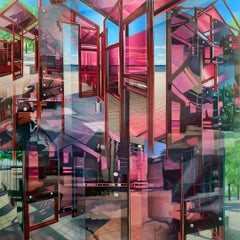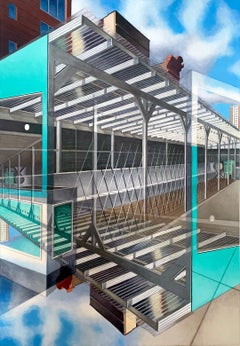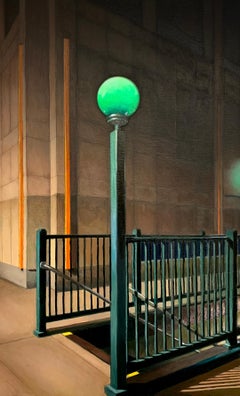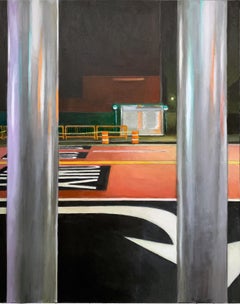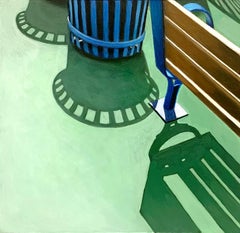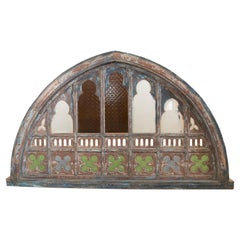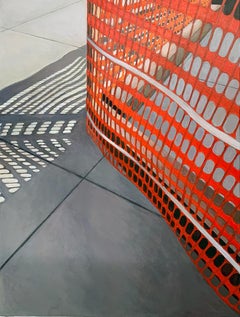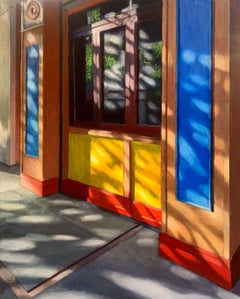Anne Finkelstein
2010s Abstract Interior Paintings
Canvas, Acrylic
2010s Hard-Edge Still-life Paintings
Canvas, Acrylic
2010s Hard-Edge Still-life Paintings
Board, Acrylic
2010s Hard-Edge Still-life Paintings
Canvas, Acrylic
2010s Hard-Edge Still-life Paintings
Panel, Acrylic
2010s Hard-Edge Still-life Paintings
Panel, Acrylic
2010s Hard-Edge Still-life Paintings
Board, Acrylic
Mid-20th Century Realist Figurative Paintings
Canvas, Oil
People Also Browsed
Mid-20th Century European Windows
Glass, Wood
Artist Comments
"On hot summer afternoons on the East Side of Milwaukee, a young man could often be seen carrying his pet Tegu lizard to Bradford Beach so it could bask in the ...
21st Century and Contemporary Outsider Art Animal Paintings
Acrylic
Vintage 1980s Modern Prints
Paper
19th Century Victorian Figurative Paintings
Canvas, Oil
Early 2000s Abstract Impressionist Still-life Paintings
Oil, Canvas
Mid-20th Century Color-Field Landscape Paintings
Oil, Board
Late 20th Century American Modern Paintings
Canvas, Wood, Paint
Antique 18th Century Italian Neoclassical Prints
Glass, Giltwood, Paper
Antique 19th Century French Renaissance Revival Paintings
Enamel
Early 20th Century Prints
Paper
21st Century and Contemporary Contemporary Interior Paintings
Acrylic, Canvas
Vintage 1970s American Contemporary Art
Canvas, Paint
1930s American Realist Figurative Prints
Woodcut
1980s Abstract Abstract Paintings
Oil
21st Century and Contemporary Italian French Provincial Prints
Paper
Mid-20th Century Unknown Mid-Century Modern Paintings
Paint
Recent Sales
2010s Hard-Edge Still-life Paintings
Panel, Acrylic
2010s Hard-Edge Still-life Paintings
Acrylic, Panel
Mid-20th Century Realist Figurative Paintings
Canvas, Oil
A Close Look at abstract Art
Beginning in the early 20th century, abstract art became a leading style of modernism. Rather than portray the world in a way that represented reality, as had been the dominating style of Western art in the previous centuries, abstract paintings, prints and sculptures are marked by a shift to geometric forms, gestural shapes and experimentation with color to express ideas, subject matter and scenes.
Although abstract art flourished in the early 1900s, propelled by movements like Fauvism and Cubism, it was rooted in the 19th century. In the 1840s, J.M.W. Turner emphasized light and motion for atmospheric paintings in which concrete details were blurred, and Paul Cézanne challenged traditional expectations of perspective in the 1890s.
Some of the earliest abstract artists — Wassily Kandinsky and Hilma af Klint — expanded on these breakthroughs while using vivid colors and forms to channel spiritual concepts. Painter Piet Mondrian, a Dutch pioneer of the art movement, explored geometric abstraction partly owing to his belief in Theosophy, which is grounded in a search for higher spiritual truths and embraces philosophers of the Renaissance period and medieval mystics. Black Square, a daringly simple 1913 work by Russian artist Kazimir Malevich, was a watershed statement on creating art that was free “from the dead weight of the real world,” as he later wrote.
Surrealism in the 1920s, led by artists such as Salvador Dalí, Meret Oppenheim and others, saw painters creating abstract pieces in order to connect to the subconscious. When Abstract Expressionism emerged in New York during the mid-20th century, it similarly centered on the process of creation, in which Helen Frankenthaler’s expressive “soak-stain” technique, Jackson Pollock’s drips of paint, and Mark Rothko’s planes of color were a radical new type of abstraction.
Conceptual art, Pop art, Hard-Edge painting and many other movements offered fresh approaches to abstraction that continued into the 21st century, with major contemporary artists now exploring it, including Anish Kapoor, Mark Bradford, El Anatsui and Julie Mehretu.
Find original abstract paintings, sculptures, prints and other art on 1stDibs.
Finding the Right paintings for You
Painting is an art form that has spanned innumerable cultures, with artists using the medium to tell stories, explore and communicate ideas and express themselves. To bring abstract, landscape and still-life paintings into your home is to celebrate and share in the long tradition of this discipline.
When we look at paintings, particularly those that originated in the past, we learn about history, other cultures and countries of the world. Like every other work of art, paintings — whether they are contemporary creations or works that were made during the 19th century — can often help us clearly see and understand the world around us in a meaningful and interesting way.
Cave walls were the canvases for what were arguably the world’s first landscape paintings, which depict natural scenery through art. Portrait paintings and drawings, which, along with sculpture, were how someone’s appearance was recorded prior to the advent of photography, are at least as old as Ancient Egypt. In the Netherlands, landscapes were a major theme for painters as early as the 1500s. Later, artists in Greece, Rome and elsewhere created vast wall paintings to decorate stately homes, churches and tombs. Today, creating a wall of art is a wonderful way to enhance your space, showcase beautiful pieces and tie an interior design together.
No matter your preference, whether you favor Post-Impressionist paintings, animal paintings, Surrealism, Pop art or another movement or specific period, arranging art on a blank wall allows you to evoke emotions in a room while also showing off your tastes and interests. A symmetrical wall arrangement may comprise a grid of four to six pieces or, for an odd number of works, a horizontal row. Asymmetrical arrangements, which may be small clusters of art or large, salon-style gallery walls, have a more collected and eclectic feel. Download the 1stDibs app, which includes a handy “View on Wall” feature that allows you to see how a particular artwork will look on a particular wall, and read about how to arrange wall art. And if you’re searching for the perfect palette for your interior design project, what better place to turn than to the art world’s masters of color?
On 1stDibs, you’ll find an expansive collection of paintings and other fine art for your home or office. Browse abstract paintings, portrait paintings, paintings by popular artists and more today.
